
Heinrich Friedetzky fue un Anarquista Alemán el cual mantuvo sus creencias a pesar de experimentar en sus carnes el Nazismo,las prisiones y campos de concentración.
El último de ocho niños de un trabajador del ferrocarril. Heinrich nació el 8 de Octubre de 1910 en Bebra en el estado de Hesse,Alemania. Su madre murió en 1913 y su padre en 1920. Desde 1912 la familia vivió en Ratibor,Upper Silesia,ahora parte de Polonia. Donde Heinrich vivió con sus hermanos,hermanas y una madastra.
A la edad de 14 dejó la escuela y empezó el aprendizaje durante tres años y medio como un electricista. Después de leer un libro de Darwin rompió radicalmente con su catolicismo y se unió a un sindicato anarquista,(FAUD) Freie Arbeiter Union Deutschand,a los 18 años. La FAUD de Raitbor como en todos los sitios de Alemania a principios de los años 20 tenía un gran número de miembros. Los cuales empezaron a disminuir desde 1923 aunque en 1928 el grupo de Raitbor todavía contaba con 60 miembros. Los libros anarquistas pasaban de mano en mano y representaron varias obras de teatro,como resultado del mismo Heinrich se convirtió en un autodidacta. La FAUD de Raitbor fue la iniciadora de los Cuervos Negros,una organización armada antifascista la cual actuaba a parte de los miembros del FAUD,trabajadores que no formaban parte de partidos políticos u organizaciones. Este grupo sirvió como un ejemplo a otros en otras partes de Alemania. En Mayo de 1932 la policía descubrió una gran cantidad de explosivos en Beuthen, Upper Silesia. Como resultado de esta redada tres militantes de la FAUD dejaron Alemania y tomaron refugio en España. Estos eran Alfons Molina,Berhard Pacha y Paul Czakon. Un poco más adelante,un poco por aventura,por encontrarse otra vez con sus camaradas y por conocer el gran movimiento Anarquista en España,Heinrich junto con Adolf Wlodarz y Max Piechulla se pusieron en marcha a pie para ir a Barcelona en Mayo de 1933.
En verano de 1936 durante el tiempo que el movimiento Anarquista Alemán había sido obligado a la clandestinidad por el terror Nazi,la red local del FAUD fue descubierta en Upper Silesia por la Gestapo.
Heinrich todavía estaba trabajando como electricista en verano de 1937 cuando decidió ir a España a tomar parte en la lucha allí. Junto con su camarada Max Piechulla,él otra vez cruzó Checoscovaquia,Austria y Suiza,donde se encontró a los destacados anarquistas Fritz Brupbacher en Zurich y Luigi Bertoni en Ginebra. Llegando a Perpiñan en el local anarquista le desanimaron por su lejana procedencia,porque el movimiento Anarquista Español había explicitamente indicado que las prioridades eran medicamentos,armas y municiones,no necesitando voluntarios extranjeros.
Como resultados los dos anarquistas fueron a Paris desde donde salieron otra vez en tren a Barcelona. Por un ataque aéreo el tren fue desviado a Valencia,donde directamente fueron enviados al frente,uniendo se a una Brigada Internacional. Su Comandante Comunista vio a los anarquistas como sus mejores luchadores y les dejo entrar en la Brigada,pero remarcando que tan pronto llegara la victoria,”¡Seréis fusilados enseguida!”.
En Febrero de 1938 después de un curso de entrenamiento fueron enviados al frente(En la XI Brigada) . Un mes más tarde cerca de Alcañiz fueron capturados por tropas Italianas, afortunadamente,si hubieran sido detenidos por los soldados franquistas hubieran sido ejecutados inmediatamente. Heinrich y Max fueron encarcelados en San Pedro de Cardeña,un monasterio convertido en prisión. Temiendo ser repatriados a Alemania,Max pasó por ciudadano Polaco ya que lo hablaba frecuentemente y Heinrich pasó por ciudadano Checo,ya que lo hablaba muy bien. Funcionó para Max,pero no para Heinrich ahora que Checoslovaquia había sido anexionada por Hitler. Después de un interrogatorio por la Gestapo fue deportado a Alemania con 700 Alemanes de los Sudetes,minoría Alemana en Checoslovaquia. Su verdadera identidad fue descubierta en su retorno en Noviembre de 1939,siendo condenado a 2 años y medio de cárcel como “un combatiente de la España Roja”. Siendo enviado al campo de concentración de Sachsenhausen y de allí al de Ravensbruck.( Murieron en este campo 92000 prisioner@s principalmente mujeres,muchas acompañadas de bebes y adolescentes) http://www.memoriales.net/topographie/Alemania/ravens.htm

Por sus conocimiento de electricidad conservó su vida,pero lo maltrataron y torturaron como a todos. Fue liberado(junto con 3500 mujeres y 300 hombres por el Ejercito Soviético) junto a otros a finales de Abril de 1945. Receloso de los comunistas ,después de su experiencia en España y la que comprobó en los campos de concentración,decidió no volver a Upper Silesia,ahora en la zona ocupada por los Soviéticos.
Se trasladó al norte de Alemania,Lubeck instalando se con una mujer con tres hijos. Empezó activamente en el Comité de Internados en Campos de Concentración,una agrupación antifascista sin ninguna afiliación política. Durante un corto período contactó con la Federación Socialista Libertaria,FFS,fundada por supervivientes anarquistas después de la guerra. Perdiendo contacto poco a poco con estos,manteniendo contacto con algunos como Agustín Souchy,que como el vino de Upper Silesia.
A principios de los años 90 un historiador anarquista trabajando para el Instituto Internacional de Historia Social de Holanda contactó con él y lo visitó el Lubeck.
Un poco más adelante tras una larga enfermedad y la muerte de su compañera,Heinrich se trasladó en 1993 a Colonia para vivir con un sobrino. Una semana antes del comienzo de la Semana Libertaria en Abril de 1993 en Frankfurt,el historiador telefoneó a anarquistas locales para decirlos que un viejo anarquista era su vecino. Unos días después en el auditorio de la Universidad de Frankfurt,Heinrich saludo en la apertura de los mismos.
Heinrich amaba hablar a la gente joven y asistía a reuniones anarquistas en Colonia,que apreciaba mucho. Fue entrevistado varias veces en su vida. En varios meses asistió a reuniones anarquistas en Alemania,Holanda y España. A principios de 1994,su salud se deterioraba y por esto fue enviado a pasar el invierno a España. Gracias a la ayuda de la CNT Española lo alojaron en Alicante junto con una familia joven durante cuatro inviernos,para su alegría. En Alicante,estaba a menudo en el centro de la CNT,prefiriendo hablar del presente que del 1936. Pudiendo asistir a un congreso nacional de la CNT en el que trató de explicar,que era un anarquista en la profundidad de su ser y un anarco-sindicalista por razones tácticas.
El 14 de Mayo de 1998 Heinrich murió,un día después de su vuelta de Alicante. Durante 70 años mantuvo sus creencias anarquistas,a pesar de los campos de concentración,prisión y de los largos años de paz social después de la II Guerra Mundial.
Redactado por Nick Heath de un artículo de Hans Müller-Sewing en el Boletín 16 del Archivio Giuseppe Pinelli.
* * * * *
Heinrich Friedetzky was a German anarchist who preserved his beliefs despite the experiences of Nazism, prison and concentration camps.
The last of eight children of a railway worker, Heinrich Friedetzky was born on 8th October 1910 at Bebra in the state of Hesse, Germany. His mother died in 1913, his father in 1920. From 1912 the family lived at Ratibor in Upper Silesia, now part of Poland, where Heinrich lived with his brothers, sisters and a stepmother.
At the age of 14 he left school and started an apprenticeship of three and a half years as an electrician. After reading a book on Darwin he broke dramatically with his Catholicism, and joined the Freie Arbeiter Union Deutschland (FAUD) the anarcho-syndicalist union, at the age of eighteen.
The FAUD of Ratibor like nearly everywhere else in Germany at the beginning of the 1920s had a large membership which started to fall from 1923 onwards although in 1928 the local group still counted 60 members. Anarchist books passed from hand to hand, and various theatre pieces were performed, as a result of which Heinrich developed as an autodidact. The Ratibor FAUD was the initiator of the Schwarze Scharen (Black Crowds)), an armed antifascist organisation in which were active apart from FAUD members, workers belonging to no party or organisation This group served as an example to others in other parts of Germany. In May 1932 the police discovered a a large amount of explosives at Beuthen in Upper Silesia. As a result three militants of the FAUD left Germany to take refuge in Spain. These were Alfons Molina, Berhard Pacha and Paul Czakon. A little later, partly for love of adventure, partly to meet up again with their comrades and make acquaintance with the large anarchist movement in Spain, Heinrich, together with Adolf Wlodarz, and Max Piechulla set off by foot to go to Barcelona in May 1933.
In summer 1936 by which time the German anarchist movement had been obliged to go underground because of the Nazi terror the local FAUD network was uncovered in Upper Silesia by the Gestapo.
Heinrich was still working as an electrician and now decided in summer 1937 to go to Spain to take part in the struggle there. Together with his comrade Max Piechulla, he once again crossed Czechoslovakia, Austria, and Switzerland, where he met up with the noted anarchists Fritz Brupbacher (in Zurich) and Luigi Bertoni (in Geneva). Arriving at Perpignan in southern France, the local anarchists discouraged him from proceeding further, because the Spanish anarchist movement had explicitly stated that its priorities were medicaments and arms and ammunition, and that it did not need foreign volunteers. As a result the two German anarchists went to Paris from where they set out again by train to Barcelona. Because of an aerial bombardment the train was diverted to Valencia, from where the two went directly to the front, joining an International Brigade. Its Communist commander saw anarchists as the best fighters, and let them enter the Brigade, but remarked that as soon as victory was achieved, they would be shot at once!
In February 1938 after a training course they were sent to the front. A month later near Alcaniz, they were captured by Italian fascist troops, which was fortunate because if it had been Francoist soldiers they would have been executed immediately. Heinrich and Max were imprisoned at San Pedro de Cardena, a convent converted into a prison. Fearing repatriation to Germany, Max passed himself off as a Polish citizen, as he could speak it fluently and Heinrich, who spoke good Czech, passed himself off as a citizen of Czechoslovakia. But if that worked for Max, it did not for Heinrich as Czechoslovakia had by now been annexed by Hitler. After an interrogation by the Gestapo, Heinrich was deported to Germany with 700 Sudeten Germans ( a German minority in Czechoslovakia). His true identity was discovered on his return and in November 1939 he was sentenced to two and a half years in prison as “a combatant for red Spain”. He was sent to the concentration camp of Sachsenhausen and from there to that of Ravensbrueck.
Because of his skills as an electrician, the Nazis spared his life, but he was severely mistreated and tortured all the same. He was released with a few other survivors at the end of April 1945. Now very leery of the Communists after how he had seen them operate in Spain and within the camps, he decided not to return to Upper Silesia, which was now in the Soviet occupied zone.
He moved to Lubeck in northern Germany and moved in with a woman with three children. He became active in the Committee of Concentration Camp Internees, an antifascist grouping that had no party affiliation. For a short period he was in contact with the Foederation Freiheitlicher Sozialisten (FFS, Libertarian Socialist Federation) which had been founded after the war by surviving anarchists. But little by little he lost contact with it, maintaining contact with a few friends like Augustin Souchy, who like him came from Ratibor.
At the beginning of the 1990s an anarchist historian worked for the International Institute of Social History in the Netherlands made contact with him and visited him at Lubeck.
A little later, after the death of his partner after a long illness Heinrich moved in 1993 to Cologne to live with a nephew. A week before the start of the Libertarian Days in April 1993 at Frankfurt the historian phoned local anarchists to say that an old anarchist had moved into the neighbourhood. Contact was made and a few days later Heinrich was present at the auditorium of Frankfurt University to bring his greetings to the opening of events.
Heinrich loved to talk with young people and was invited to attend the weekly anarchist meetings in Cologne, which he much appreciated. He was interviewed several times on his life. Within several months, he attended other anarchist meetings in Germany, Holland and Spain. In early 1994 his health deteriorated and it was decided that he should spend winter in Spain. Thanks to the assistance of the Spanish CNT he was lodged in Alicante with a young family over four winters, much to his joy. In Alicante, he was often at the CNT centre, but much preferred talking about the present than about 1936. He was able to attend a national congress of the CNT which he addressed, saying that he was an anarchist to the depth of his being, and an anarcho-syndicalist for tactical reasons.
On 14th May 1998 Heinrich died, a day after his return from Alicante. For seventy years Heinrich had kept his anarchist beliefs, in spite of prison and concentration camps and the long years of social peace after World War Two.
Translated and adapted by Nick Heath from an article by Hans Müller-Sewing in Bollettino 16 of the Archivio Giuseppe Pinelli



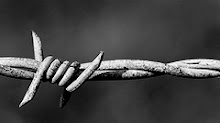

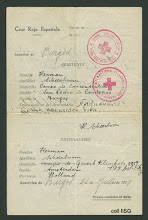
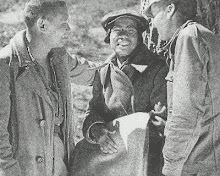
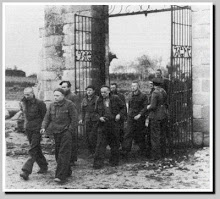






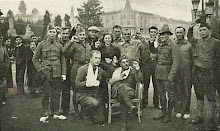

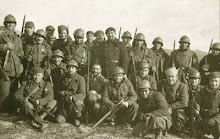

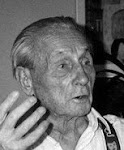
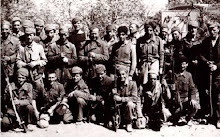
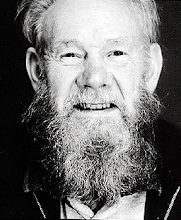
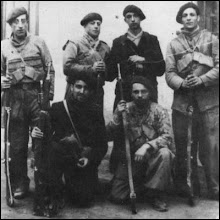


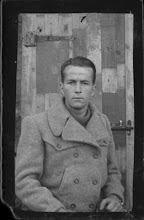
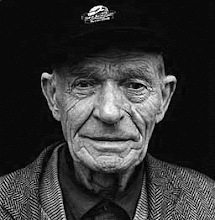
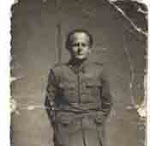
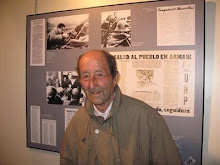
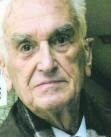








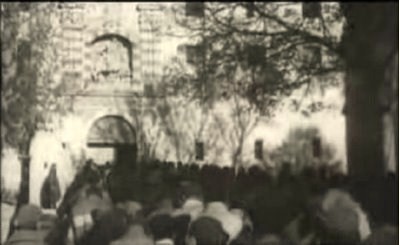


My name is jack hazut my website is www.israelimage.net you have been using my photo without my permission please contact me jackhazut@yahoo.com
ResponderEliminarhi my name is jack hazut my web sit is wwwisraelimage.net you have been using my photo without my permission please contact me jackhazut@yahoo.com
ResponderEliminarJack Hazut
Photos from Israel and the world
www.israelimage.net
www.facebook.com/jack.hazut